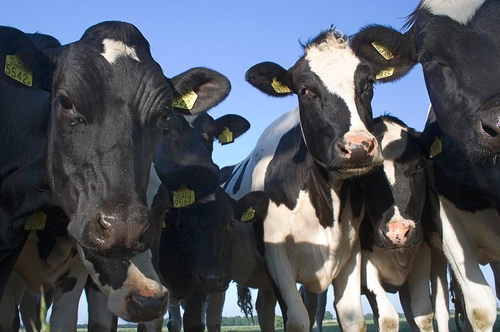Avian influenza has been detected in cows at a dairy operation in Wood County.
The Ohio Department of Agriculture (ODA) received confirmation from the United States Department of Agriculture’s (USDA) National Veterinary Services Laboratory (NVSL) of the detection of highly pathogenic avian influenza (HPAI) in a dairy cattle herd.
This is the first case of HPAI in a livestock operation in Ohio.
The dairy operation in Wood County received cows on March 8, from a Texas dairy, which later reported a confirmed detection of HPAI. Ohio’s animal health officials were notified when the livestock began showing clinical signs compatible with sick, lactating dairy cows in other states.
The U.S. Department of Agriculture (USDA), Food and Drug Administration (FDA) and Centers for Disease Control and Prevention (CDC), as well as state veterinary and public health officials, continue to investigate the emerging illness among dairy cows that is causing decreased lactation, low appetite, and other symptoms.
On March 25, state animal health officials were notified when federal agencies confirmed the detection of HPAI in dairy herds in Texas and Kansas that had cattle exhibiting these symptoms. USDA’s NVSL has since confirmed the presence of HPAI in additional dairy cattle herds in Idaho, New Mexico, and Michigan.
Federal and state agencies continue to conduct additional testing from sick animals and in unpasteurized clinical milk samples from sick animals, as well as viral genome sequencing, to assess whether HPAI or another unrelated illness may be underlying any symptoms. Clinically sick dairy cattle from affected herds range from 1% – 20%, with an average of 10% of the milking herd affected. There are no confirmed reports of death loss in dairy cattle directly attributed to these detections. Most sick cows begin recovering within a few days.
According to the Food and Drug Administration and Centers for Disease and Prevention, there is no concern about the safety of commercially pasteurized dairy products due to both federal animal health requirements and pasteurization and the public health risk associated with HPAI remains low.
ODA is working with state industry partners and federal agencies to encourage farmers and veterinarians to report cattle illnesses quickly, to monitor potential additional cases and minimize the impact and risk to farmers, farmworkers, consumers, and other animals.
Producers are urged to work with their veterinarian to practice enhanced biosecurity measures and review and limit cattle movements within production systems to avoid disease spread or bringing in cattle from known disease areas or infected herds. More information on biosecurity measures can be found here.
At this current time, no quarantines or movement restrictions on livestock are being issued by ODA. As officials continue to assess the risks of the emerging disease, and assess epidemiological information, further regulatory control actions may be implemented. If dairy producers in Ohio should see unusual clinical symptoms similar to those described, they are to contact their herd veterinarians.
For more information on the detections of HPAI in cattle, visit the U.S. Department of Agriculture’s website.

